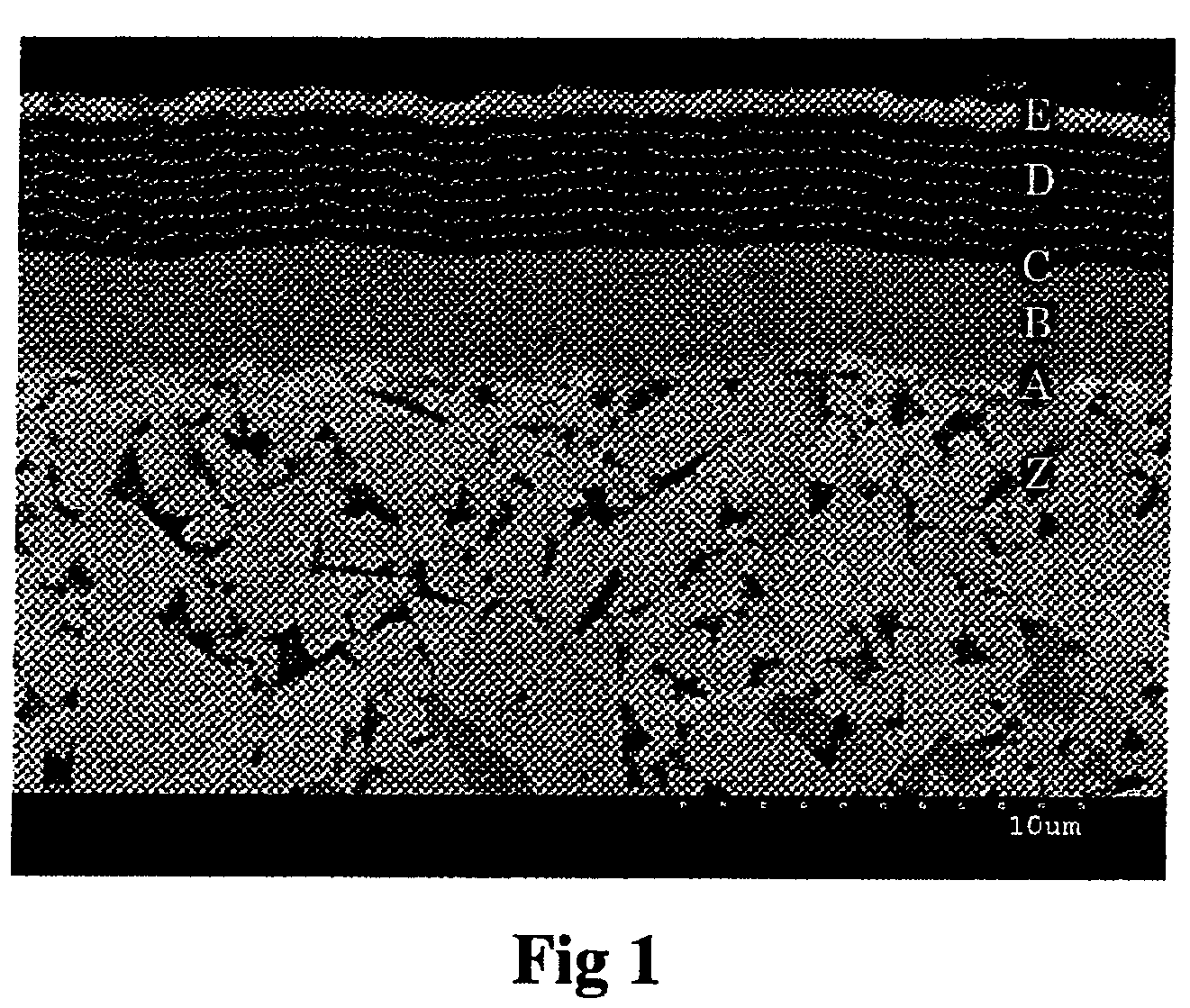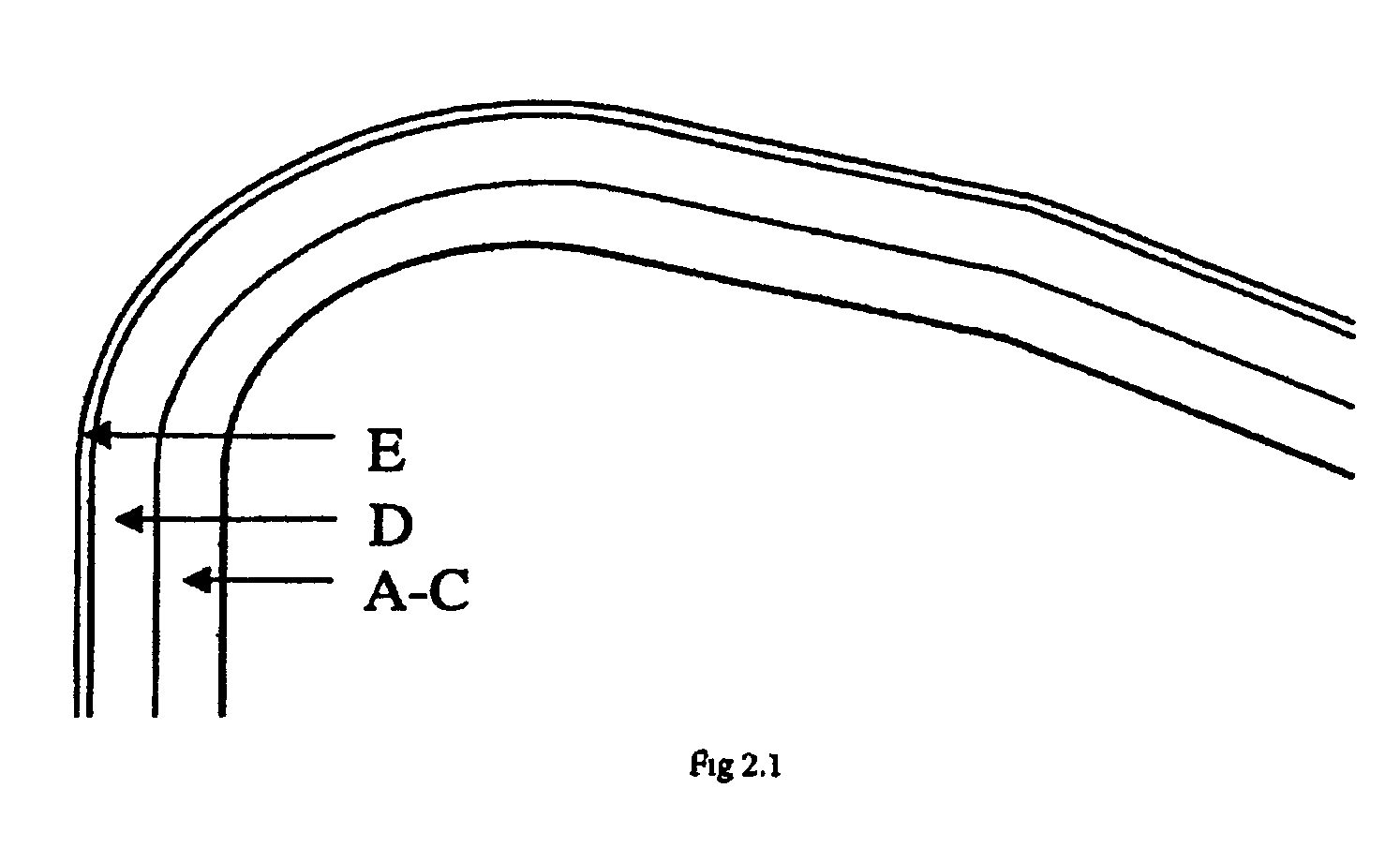Coated insert
a cemented carbide and metal cutting technology, applied in the direction of superimposed coating process, other chemical processes, instruments, etc., can solve the problems of tool wear by different mechanisms, fracturing of cutting edge, abrasion and chemical wear,
- Summary
- Abstract
- Description
- Claims
- Application Information
AI Technical Summary
Benefits of technology
Problems solved by technology
Method used
Image
Examples
example 1
[0089]Inserts from A1, A2 and E were tested in a turning operation.[0090]Operation: External axial and facing of bar[0091]Work piece material: Austenitic stainless steel, AISI304L
[0092]
Cutting Speed:270m / minFeed rate:0.3mm / revDepth of cut:2mmInsert style:CNMG 120408-MMResults:Tool lifeInsert A1: (invention)9minInsert A2: (invention)9minInsert E: (prior art)5min
[0093]Comment: Tool life criterion was maximum flank wear 0.3 mm of the cutting edge line. The wear develops irregularly due to local plastic deformation. This example shows the improvement in plastic deformation resistance for the inserts of the invention.
example 2
[0094]Inserts from B1, B2 and E were tested in a turning operation.[0095]Operation: Axial and facing operation of bar[0096]Work piece material: Austenitic stainless steel, AISI304L
[0097]
Cutting speed:290m / minFeed rate:0.2mm / revDepth of cut:2mmInsert style:CNMG 120408-MMResults:Tool lifeInsert B1: (invention)17minInsert B2: (invention)17minInsert E: (prior art)8min
[0098]Comment: Tool life criterion was maximum flank wear 0.3 mm of the cutting edge line. The wear develops irregularly due to local plastic deformation. This example shows the improvement in plastic deformation resistance for the inserts of the invention.
example 3
[0099]Inserts from B1, D and E were tested in a turning operation.[0100]Operation: Axial and facing against shoulder[0101]Work piece material: Austenitic stainless steel, AISI304L
[0102]
Cutting speed:270m / minFeed rate:0.3mm / revDepth of cut:2mmInsert styles:CNMG 120408-MMResults:Edge damageInsert B1: (invention)0.2mm / minInsert D: (prior art)0.9mm / minInsert E: (prior art)0.2mm / min
[0103]Comment: The test is focused on induced damage of the edge outside the direct area of contact between the tool and the workpiece, normally denoted chip hammering and chip jamming. The resistance of such damages is directly related to the edge toughness.
[0104]The insert of the invention shows improvements in these respects. The edge toughness is increased (inserts B1 and D) or maintained (inserts B1 and E) while the plastic deformation resistance is increased (example 2).
PUM
| Property | Measurement | Unit |
|---|---|---|
| grain size | aaaaa | aaaaa |
| grain size | aaaaa | aaaaa |
| total thickness | aaaaa | aaaaa |
Abstract
Description
Claims
Application Information
 Login to View More
Login to View More - R&D
- Intellectual Property
- Life Sciences
- Materials
- Tech Scout
- Unparalleled Data Quality
- Higher Quality Content
- 60% Fewer Hallucinations
Browse by: Latest US Patents, China's latest patents, Technical Efficacy Thesaurus, Application Domain, Technology Topic, Popular Technical Reports.
© 2025 PatSnap. All rights reserved.Legal|Privacy policy|Modern Slavery Act Transparency Statement|Sitemap|About US| Contact US: help@patsnap.com



